Incidence of maternal peripartum infection: A systematic review and meta-analysis
- PMID: 31821329
- PMCID: PMC6903710
- DOI: 10.1371/journal.pmed.1002984
Incidence of maternal peripartum infection: A systematic review and meta-analysis
Abstract
Background: Infection is an important, preventable cause of maternal morbidity, and pregnancy-related sepsis accounts for 11% of maternal deaths. However, frequency of maternal infection is poorly described, and, to our knowledge, it remains the one major cause of maternal mortality without a systematic review of incidence. Our objective was to estimate the average global incidence of maternal peripartum infection.
Methods and findings: We searched Medline, EMBASE, Global Health, and five other databases from January 2005 to June 2016 (PROSPERO: CRD42017074591). Specific outcomes comprised chorioamnionitis in labour, puerperal endometritis, wound infection following cesarean section or perineal trauma, and sepsis occurring from onset of labour until 42 days postpartum. We assessed studies irrespective of language or study design. We excluded conference abstracts, studies of high-risk women, and data collected before 1990. Three reviewers independently selected studies, extracted data, and appraised quality. Quality criteria for incidence/prevalence studies were adapted from the Joanna Briggs Institute. We used random-effects models to obtain weighted pooled estimates of incidence risk for each outcome and metaregression to identify study-level characteristics affecting incidence. From 31,528 potentially relevant articles, we included 111 studies of infection in women in labour or postpartum from 46 countries. Four studies were randomised controlled trials, two were before-after intervention studies, and the remainder were observational cohort or cross-sectional studies. The pooled incidence in high-quality studies was 3.9% (95% Confidence Interval [CI] 1.8%-6.8%) for chorioamnionitis, 1.6% (95% CI 0.9%-2.5%) for endometritis, 1.2% (95% CI 1.0%-1.5%) for wound infection, 0.05% (95% CI 0.03%-0.07%) for sepsis, and 1.1% (95% CI 0.3%-2.4%) for maternal peripartum infection. 19% of studies met all quality criteria. There were few data from developing countries and marked heterogeneity in study designs and infection definitions, limiting the interpretation of these estimates as measures of global infection incidence. A limitation of this review is the inclusion of studies that were facility-based or restricted to low-risk groups of women.
Conclusions: In this study, we observed pooled infection estimates of almost 4% in labour and between 1%-2% of each infection outcome postpartum. This indicates maternal peripartum infection is an important complication of childbirth and that preventive efforts should be increased in light of antimicrobial resistance. Incidence risk appears lower than modelled global estimates, although differences in definitions limit comparability. Better-quality research, using standard definitions, is required to improve comparability between study settings and to demonstrate the influence of risk factors and protective interventions.
Conflict of interest statement
The authors have declared that no competing interests exist.
Figures
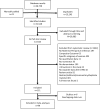

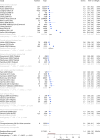
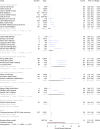
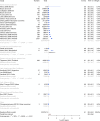
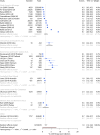
References
-
- Hussein J, Walker L. Puerperal sepsis in low and middle income settings: past, present and future. Maternal and Infant Deaths: Chasing Millennium Development Goals. 2010;4:131–147.
-
- Lawn JE, Cousens S, Zupan J, Lancet Neonatal Survival Steering Team. 4 million neonatal deaths: When? Where? Why? The Lancet. 2005;365(9462):891–900. - PubMed
Publication types
MeSH terms
Substances
Grants and funding
LinkOut - more resources
Full Text Sources
Medical
Miscellaneous

